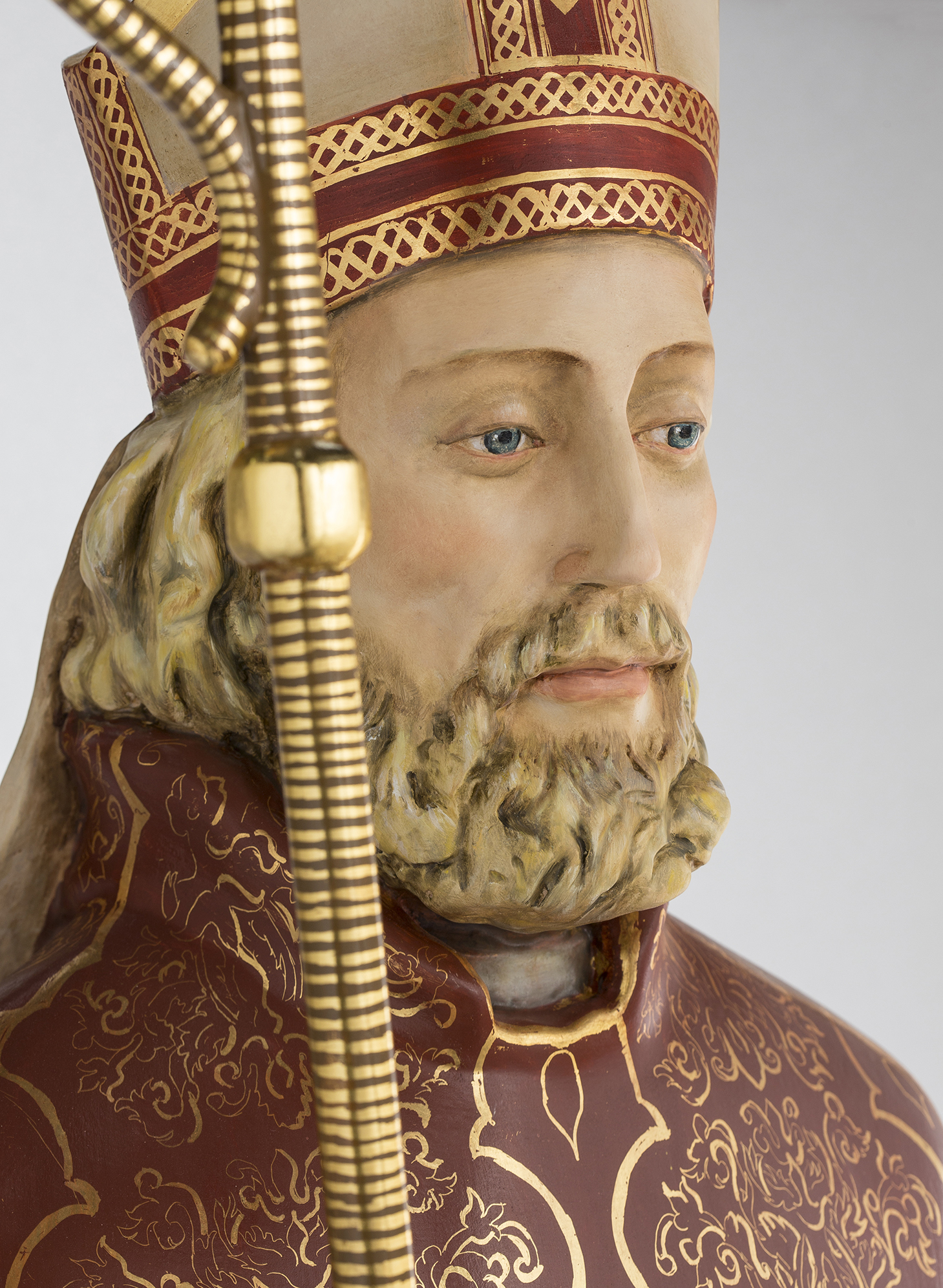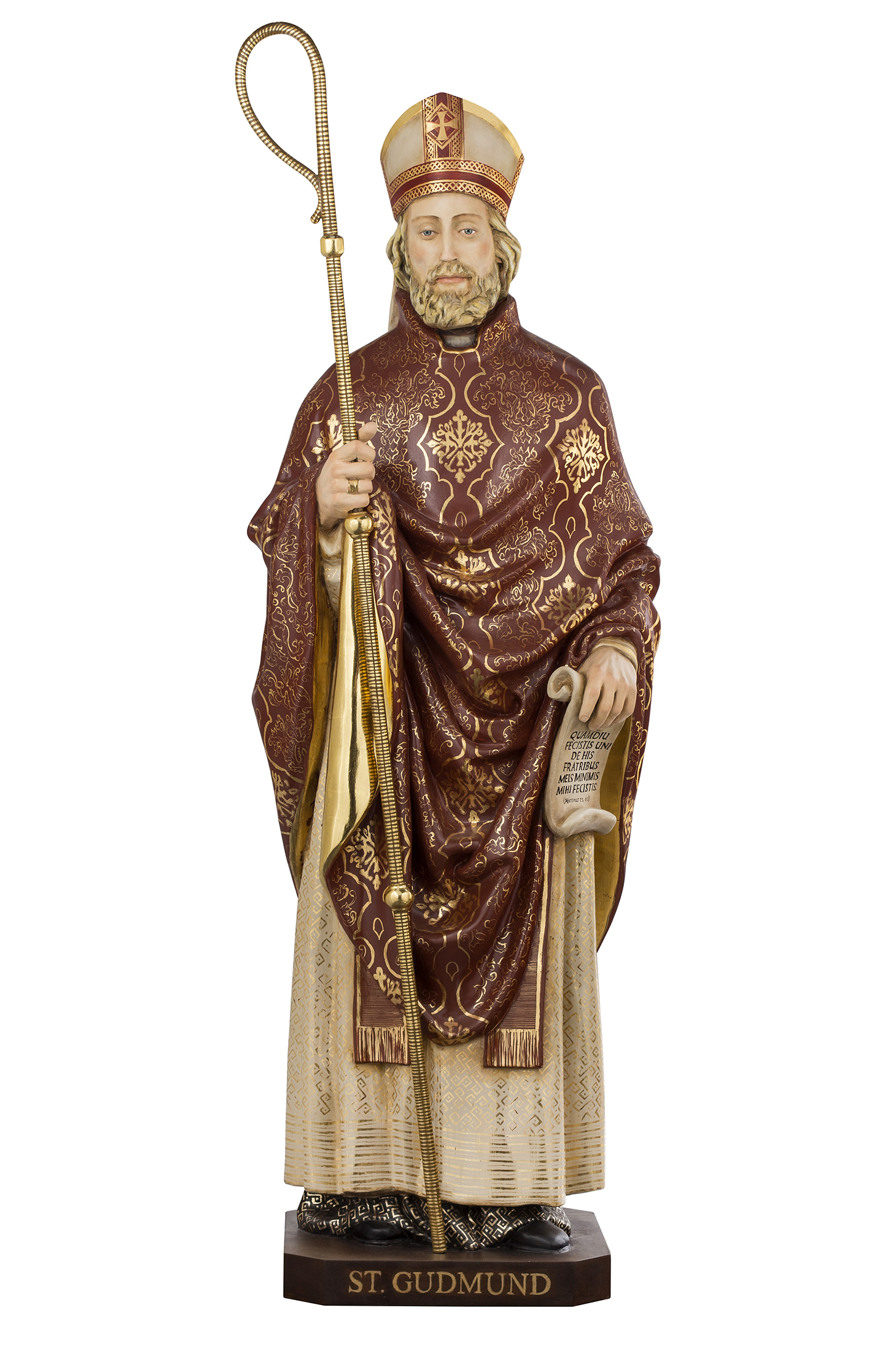GUDMUNDO THE GOOD, A SAINT OF THE THIRTEENTH CENTURY
Gudmundur Arason was born in Iceland in 1161. At the age of 24 he was ordained a priest. His reputation as an upright and devout man led him to be elected bishop ofólar.He was one of the two dioceses that existed in Iceland in the Middle Ages. During his lifetime he fought against corruption and led a life of detachment from material goods and concern for the poor. Between 1214 and 1218 he lived in Norway, which is why his fame extends there and there are several churches dedicated to him today.

SCULPTURE FOR A NEW NORWEGIAN CHURCH
We were commissioned by a newly built parish in Jessheim (Norway).
Like St. Clare's Church in Kongsvinger, the Church of St. Clare in Kongsvinger, the St Gudmund was born because of the large number of faithful coming to St. Magnus, the only one in the area.and the need to minister to all of them. Once the division was approved, St Gudmund's began its pastoral activity in January 2017.

INNOVATION: TRADITIONAL APPLICATIONS ON NEW MATERIALS
In making the initial design, we studied the figure of St. Gudmund and followed the parish's indications about its patron saint: to wear a chasuble and to carry the miter and crosier proper to a bishop. In addition, the Nordic factions have been respected that the saint must have had given his origin - whitish skin and hair, straight and vertical forehead, light eyes, narrow and straight nose, angular jaw and pointed chin, athletic constitution... -. while at the same time trying to give the face the serenity that, according to tradition, characterized it.

In addition, the architecture of the building and the elements that the church already had at its disposal had to be taken into account: a tabernacle of red Granda marble the archbishopric purchased a year ago, and a Renaissance statue of the Virgin MaryThe style was to be the same so as not to break the unity of the interior space and not to detract from the prominence of the Virgin.
That is the reason why the image of St. Gudmund was chosen as a bishop and another possible project of a sculptural group in which St. Gudmund would be surrounded by poor children was not realized. Instead, the saint holds in his hands a scroll that says: "Quamdiu fecistis uni de his fratribus meis minimis mihi fecistis" (Matteus 25, 40) "What you did to one of these my brothers, even to the least of them, you did to me."
The stewing technique, previously gilded in water with fine gold, has made it possible to create a Renaissance chasuble for the saint, matching that of Mary's mantle.
The representation of St. Gudmund, 150cm high, was modeled in clay and later reproduced in resin in our workshops. This is the first time that fine burnished gold has been applied on resin material in the workshop and has been made possible by the previous application of an acrylic preparation base on the resin. The application of a traditional Granda treatment on a new base has had an excellent result, improving performance and production time while maintaining excellence in part quality.
You can see here the pictures of the process:
